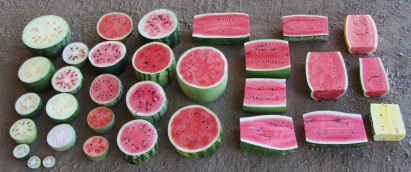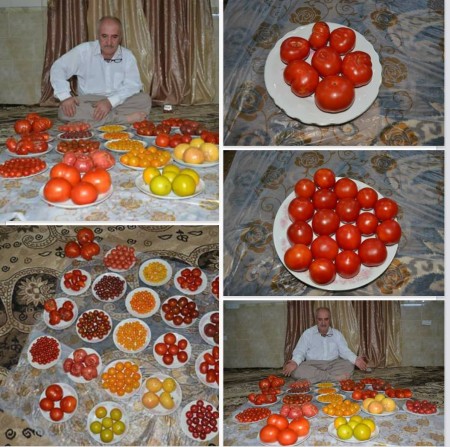There really is nothing like photos of agricultural biodiversity to set the pulse racing. Well, at least in our weird little corner of cyberspace. It’s been crazy over on Twitter and Facebook, what with frenzied sharing of, and commenting on, a couple of stories about, of all things, watermelons. Well, it is summer, I guess: they don’t call it the silly season for nothing.
To recap for those who do not follow us on other media, 1 people seem to have really been impressed by the photos which accompanied a story on the sequencing of the watermelon genome. Although it dates back to three years ago, for some reason it resurfaced again last week.

It may well have been resurrected because of a Vox.com story on how James Nienhuis, a horticulture professor at the University of Wisconsin, is using Renaissance paintings of watermelons and other produce to illustrate the changes that have been wrought by modern plant breeding. The story was later taken up by others, and bounced around a lot. And all long before National Watermelon Day. And also before the AoB post on watermelon origins.
Well, let me add to the hysteria. Courtesy of my friend Dr Yawooz Adham, here’s another fantastic agrobiodiversity photo, of tomatoes this time.

The farmer’s name is Shiek Jamally Karbanchi 2 and he lives in a village near the town of Chamchamal, between Kirkuk and Sulaymaniyah in Iraqi Kurdistan. He tends 22 different tomato varieties, and is clearly incredibly proud of them. Though I’m pretty sure he doesn’t charge Euros 20 each for them. I don’t know if they’re all commercial varieties or whether there’s a few local heirlooms in there, but either way it’s damn impressive.
- And why don’t you?
- He’s on Facebook!
